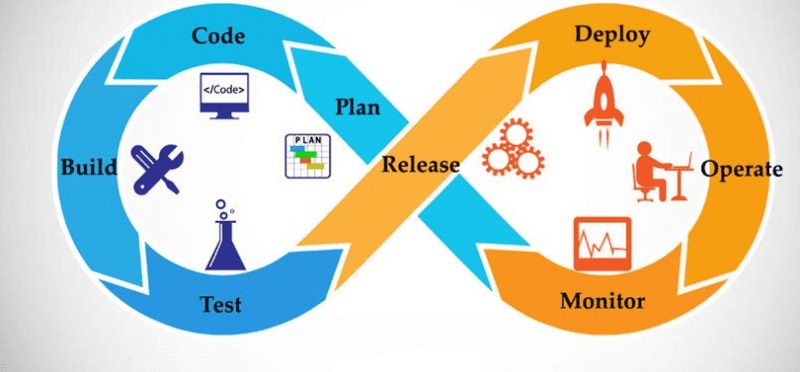Let’s make it clear that this is not any technology, tool or any innovative framework but more a concept or philosophy. One can also consider it as the culture of an organization where the application lifecycle management stays at the center of the focus. DevOps is actually made of the merging of two words, operations, and development. Both of these teams have different responsibilities in the cycle of application release management. This term is more related to collaboration, communication, and feedback between the various stakeholders like testers, developers, configuration management team, infrastructure team and deployment team etc.
DevOps is the brand new term that emerging from the impact two key trends. The first one is an agile operation or agile infrastructure. It actually sprang from the way of applying lean and agile approaches to the work operations. The second one can be the much-expanded understanding of the collaboration value between operations and development staffs throughout the different stages and steps of development lifecycle when operating and creating a service and the way the operations become important in this service-oriented technical world. This is a major part of agile software development that comes from the necessity to cope up with the increasing velocity of software and the complete way that the agile methods have gained. More advancement is the agile culture and the methods over last few decades opened some new approaches to an end to end lifecycle of software delivery. When you are working with a DevOps consulting service you will find a lot of various things too numerous people as the discussion on the topic covers numbers of different grounds. DevOps includes various sub concepts like: Continuous integration It is more of the culture of integrating application code or the source code into the repositories of the source code like GIT or SVN several times in a day. Build tools like Maven, Ant is used to verify the check-in by integrating the source code repositories and the continuous integration tools like Atlassian Bamboo and Jenkins. Continuous testing Unit testing or automated testing should be more precise. Selenium or JUnit is specifically used for this kind of automated testing and these tools are integrated into constant integration behavior. Continuous provisioning or the cloud provisioning Configuration management Configuration management is efficient to make the runtime environment ready in a consistent manner across different settings. Puppet, Chef or Ansible can be used as the configuration management tools. It is quite easy to manage the resources with these tools in a cloud environment. Continuous deployment or delivery Continuous delivery or continuous deployments are the terms that used for day to day purposes. Continuous delivery can be used properly the package file is ready for deployment into any type of environment and continuous delivery is the right word when the package file is ready for production deployment. How DevOps helps to increase your IT security? DevOps is more important to make your software delivery faster and pretty much efficient but it also can keep your software secure. It actually refers to the set of cultural priorities and practices that related to the good way that the software is designed, deployed and produced. It may emphasize collaboration between the IT Ops, developers and everyone, who are involved in the process like the designers and testers. When DevOps is done efficiently, it can reduce the time span that takes to design software from idea or concept to the implementation and delivery to the user. It can also add more efficiency to the delivery process of software in a different manner. It also helps the team members to finish the task in parallel. It can ensure the ways to fix the coding problem in the process of delivery pipeline and within less time. DevOps constantly encourage a good communication between the IT team members to secure the software better.
Δ




